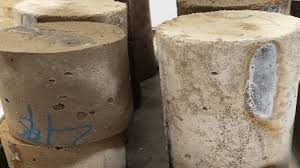
Breaking News
 Should We Leave Our Health in RFK Jr.'s Hands?
Should We Leave Our Health in RFK Jr.'s Hands?
 "Something BIG Is About to Hit America…" - Whitney Webb
"Something BIG Is About to Hit America…" - Whitney Webb
 John Oliver Sells His Bob Ross Painting Raises Record $1.5 Million for Public Television
John Oliver Sells His Bob Ross Painting Raises Record $1.5 Million for Public Television
 Impulse Labs extends its game-changing, ultra-fast cooktop
Impulse Labs extends its game-changing, ultra-fast cooktop
Top Tech News
 First totally synthetic human brain model has been realized
First totally synthetic human brain model has been realized
 Mach-23 potato gun to shoot satellites into space
Mach-23 potato gun to shoot satellites into space
 Blue Origin Will Increase New Glenn Thrust 15-25% and Make Rocket Bigger
Blue Origin Will Increase New Glenn Thrust 15-25% and Make Rocket Bigger
 Pennsylvania Bill – 'Jetsons Act' – Aims To Green-Light Flying Cars
Pennsylvania Bill – 'Jetsons Act' – Aims To Green-Light Flying Cars
 New Gel Regrows Dental Enamel–Which Humans Cannot Do–and Could Revolutionize Tooth Care
New Gel Regrows Dental Enamel–Which Humans Cannot Do–and Could Revolutionize Tooth Care
 Researchers want to drop lab grown brains into video games
Researchers want to drop lab grown brains into video games
 Scientists achieve breakthrough in Quantum satellite uplink
Scientists achieve breakthrough in Quantum satellite uplink
 Blue Origin New Glenn 2 Next Launch and How Many Launches in 2026 and 2027
Blue Origin New Glenn 2 Next Launch and How Many Launches in 2026 and 2027
 China's thorium reactor aims to fuse power and parity
China's thorium reactor aims to fuse power and parity
 Ancient way to create penicillin, a medicine from ancient era
Ancient way to create penicillin, a medicine from ancient era
Lithium mining waste finds purpose in strengthening concrete

It's also responsible for consuming vast quantities of non-renewable resources, and spewing out 8% of all greenhouse gas emissions annually. So any steps we can take towards reducing the impact of its production on the planet is a worthwhile effort.
To that end, researchers in South Australia have found a way to funnel the byproduct of another destructive process – lithium mining – into making stronger and more durable concrete.
The challenge with lithium mining is that we depend heavily on this element to manufacture batteries for electronics and zero-emission electric vehicles – but the process of extracting it is extremely taxing on the environment. It has to be mined out of hard rock deposits containing minerals like spodumene ore, and this produces a lot of waste.
In particular, producing one ton of lithium hydroxide monohydrate generates about 7-10 tons of a byproduct called delithiated β-spodumene (DβS), but its uses haven't been well understood thus far. That results in it being disposed as hazardous waste, which poses environmental risks on top of the damage already caused by getting lithium out of the ground.
Engineers from Flinders University found that DβS exhibits pozzolanic properties, which means it reacts chemically to enhance the strength and durability of concrete by making it less permeable and also resistant to corrosion. Their study revealed when used as a binding agent in producing concrete, DβS can significantly improve mechanical performance and long-term resilience.
The team essentially replaced fly ash – a waste product from coal combustion – in creating geopolymer paste which acts as a binder in concrete. Replacing 25% of the fly ash content with DβS using an optimal alkaline activating solution ratio resulted in a 34% increase in the strength of concrete, compared to an equivalent mix with 100% fly ash. Adjusting the mix ratio of alkaline activating solutions led to a strength increase of 74%.
That shows that DβS can help produce concrete that's stronger than the usual stuff made with fly ash. It's the result of a denser and more robust internal structure of the concrete after 28 days of curing.
"With lithium refining responsible for generating increased volumes of DβS, the capability to reuse this in construction offers a sustainable solution that will reduce industrial waste, prevent potential soil and groundwater contamination, and support circular economic practices in the mining and building sectors," explained structural engineer Dr. Aliakbar Gholampur, who led the study that appeared in the journal Materials and Structures last month.



